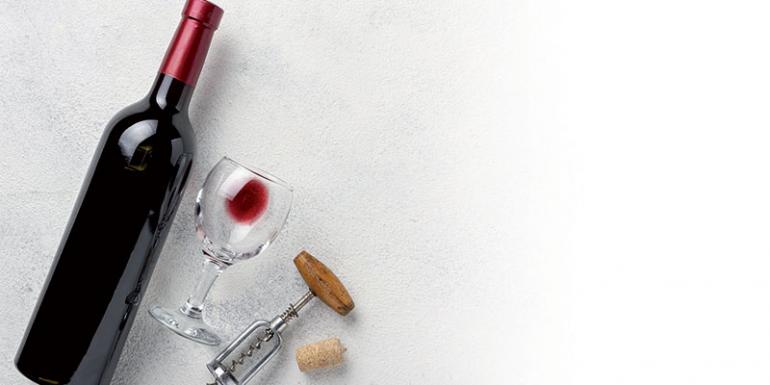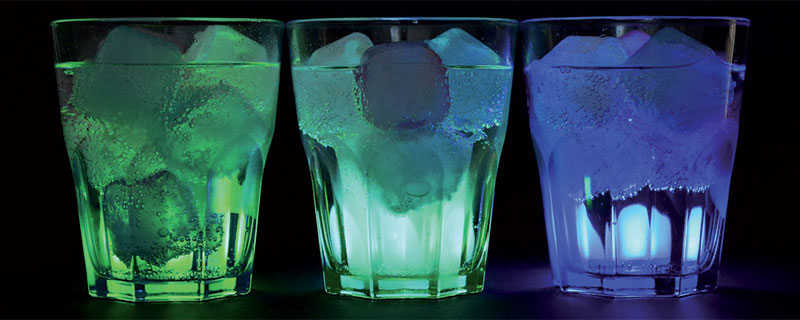Beverages in Italy: values and volumes

Facts, data and dynamics of the sector in 2019, with first, cautious anticipations on the evolution of the market in 2020.
Barbara Iascone
Istituto Italiano Imballaggio
Divided between alcoholic and non-alcoholic beverages, the sector as a whole occupies a large portion of the food sector.
Analyzing the evaluations of IRI Infoscan, in 2019 - the year in which the Italian manufacturing industry stood out for stability - the beverages area showed good dynamism, recording a +2.2% turnover compared to 2018.
According to the analysis of the database of the Italian Packaging Institute, from a quantitative point of view, the sector recorded a +2.3%, bringing the beverages produced in Italy in 2019 to over 25,300 million liters.
Still in quantitative terms, consumption was quite stable, at a low +0.3% (and therefore in line with the general trend of the manufacturing industry).
| 2007 | 2016 | 2017 | 2018 | 2019 | Estimate 2020 | |
|---|---|---|---|---|---|---|
| Production | 22,266 | 23,478 | 24,604 | 24,790 | 25,355 | 25,512 |
| Import | 1,283 | 1,226 | 1,267 | 1,300 | 1,303 | 1,309 |
| Export | 3,017 | 3,960 | 4,212 | 4,415 | 4,641 | 4,487 |
| Consumption | 20,532 | 20,744 | 21,658 | 21,675 | 22,017 | 22,334 |
Source: Banca Dati Istituto Italiano Imballaggio
The trend in turnover is different, in relation to consumption in the different beverage sectors. Starting from alcoholic beverages, beer consumption grew by 1.9%, spending on wine grew by 2% (which becomes +8% for sparkling wines and champagne), and the consumption of aperitifs grew by 6.4%.
As far as soft drinks are concerned, we find the negative trend of expenditure on juices and nectars (-3.3%) and, again in terms of value, sales of carbonated drinks are down, while those of mineral water and flat drinks are growing.
The 25,300 million liters of beverages reached in 2019 are divided between 77% non-alcoholic beverages and 23% alcoholic beverages. The positive trend in production is supported by +5% of exports, which reach over 4,600 million liters; imports are stable. Domestic consumption, again in terms of volume, grew by +1.6%.
The evolutionary hypotheses for 2020 are very cautious, given the difficulty of expressing oneself on such a particular year.
If, on the one hand, consumption was sustained by online sales and in general by the continuity of production guaranteed by almost the entire food sector, on the other hand, the disastrous trend of Horeca (only partially recovering during the summer months) should be considered.
On the basis of the Institute’s analysis, a +0.6% in production is assumed, but supported almost exclusively by the domestic market, given the forecast of a 3% drop in exports.
The alcoholic beverages market
Wines, sparkling wines, beer, super spirits and aperitifs: in 2019, global production expressed by volume grew by 6% (over 6,000 million liters), driven essentially by +9.5% of exports. Import fell (-6.8%) while apparent consumption closed with +1.6%.
In the alcoholic beverages sector, the most representative are wines and sparkling wines, which together occupy 63% of the segment and grow by 3.8% (sparkling wines alone grow by 9%).
The trend is also excellent for beer, which closes 2019 with +5% production expressed in liters, alcoholic aperitifs (+2.5%) and spirits, which are growing mainly driven by the increase in cocktail consumption.
As far as 2020 is concerned, we assume that it will be the spirits that will be most affected by the “lock-down effect”, also due to the heavy drop in Horeca, bringing the segment to -1.8%. In general, all trends could be negative (-2% approximately), with the only exceptions of sparkling wines and beers, which should settle around +1.5% and +1% respectively.
| 2007 | 2016 | 2017 | 2018 | 2019 | Ipotesi 2020 | |
|---|---|---|---|---|---|---|
| Produtcion | 5,062 | 5,280 | 5,495 | 5,704 | 6,047 | 5,953 |
| Import | 809 | 889 | 913 | 919 | 856 | 862 |
| Export | 1,617 | 2,060 | 2,168 | 2,217 | 2,427 | 2,336 |
| Consumption | 4,254 | 4,109 | 4,239 | 4,406 | 4,476 | 44,790 |
Source: Banca Dati Istituto Italiano Imballaggio
The soft drinks market
In 2019, non-alcoholic beverages also registered positive trends, albeit at a more moderate pace than spirits. Production grew by +1.2% compared to 2018, with volumes exceeding 19,300 million liters.
As far as foreign trade is concerned, exports grew by a small 0.7%, while imports showed a much better trend (+17%).
Consumption grew by 1.6%.
According to the volume analysis, the most representative drink in the segment is mineral water, with a share of 73%. In 2019, Italian production of mineral water recorded +1.7% and exceeded 14.700 million liters. This trend is certainly influenced by +3.7% of exports but also by the domestic market trend, which sees its volumes grow by 1.5%. Excellent performance of imports, which close 2019 at +8%.
After the negative trend registered in 2018, soft drinks also registered a positive growth rate: production at +2.3% with 2,500 million liters.
The negative trend is confirmed for fruit juices and nectars (production at -10%) and the situation for flat drinks is also negative (-1.3%).
In 2020, one expects to register +1% in terms of production, confirming that sales at the large-scale retail trade held up very well during the lockdown. The export of soft drinks will also suffer a setback, which will result in a rate of -2.8%, while imports will be stable and consumption positive (+1.8%).
| 2007 | 2016 | 2017 | 2018 | 2019 | Estimate 2020 | |
|---|---|---|---|---|---|---|
| Production | 17,204 | 18,198 | 19,109 | 19,086 | 19,308 | 19,559 |
| Import | 474 | 337 | 354 | 381 | 447 | 447 |
| Export | 1,400 | 1,900 | 2,044 | 2,198 | 2,214 | 2,151 |
| Consumption | 16,278 | 16,635 | 17,419 | 17,269 | 17,541 | 17,855 |
Source: Banca Dati Istituto Italiano Imballaggio
Beverage packaging
Packaging, as is well known, remains a strategic variable in the beverage sector. Very often the competition between different types of packaging is played out within the marketing and communication offices and often the choice of one material over another becomes a strategic issue. An example of this is the return to the glass bottle for some famous carbonated drinks, or the use of flexible converter packaging in the packaging of fruit juices at the expense of brick.
The packaging mix of the global beverage industry (alcoholic + non-alcoholic) is dominated by the plastic bottle (59.3%), followed by glass (30.6%). The rigid containers made of polyacopaque cellulose have a share of 2.9%, cans 2.5% and “other” 4.7% (cheer packs, plastic cups, draught distribution, kegs, demijohns).
| 2016 | 2017 | 2018 | 2019 | Estimate 2020 | |
|---|---|---|---|---|---|
| Glass bottles | 29.30% | 29.40% | 30.10% | 30.60% | 30.20% |
| Mainly paper laminates | 3.20% | 3.20% | 3.10% | 2.90% | 2.90% |
| PET bottles | 60.10% | 60.20% | 59.70% | 59.30% | 59.90% |
| Metal tins | 2.50% | 2.50% | 2.50% | 2.50% | 2.50% |
| Other (1) | 4.80% | 4.70% | 4.60% | 4.70% | 4.70% |
| Total | 100% | 100% | 100% | 100% | 100% |
(1) Cheerpacks, cups, draught distributors.
Source: Banca dati Istituto Italiano Imballaggio
As far as the packaging of alcoholic beverages is concerned, the “undisputed sovereign” of the sector remains the disposable and returnable glass bottle: various attempts to replace it with other materials - plastic or brick - have not affected its market share (77.6%). With 13% of share follows the item “other”, where we find drums, demijohns and drink dispensers on tap.
Bricks represent 5.5% of the packaging mix, metal cans are at 3% and plastic bottles represent only 0.9%.
| Glass bottles | 77.60% |
| Mainly paper laminates | 5.50% |
| PET bottles | 0.90% |
| Metal tins | 3% |
| Other (1) | 13% |
| Total | 100% |
(1) Cheerpacks, cups, draught distributors
Source: Banca dati Istituto Italiano Imballaggio
In the soft drinks segment, the plastic bottle mainly intended for mineral water is predominant (78.1% and growing); glass accounts for 15.5%, followed at a distance by bricks (2%), cans (2.3%) and the item “other” (2.1%) which includes cheerpacks, drums and draught dispensers.
| Glass bottles | 15.50% |
| Mainly paper laminates | 2.00% |
| PET bottles | 78% |
| Metal tins | 2.30% |
| Other (1) | 2.10% |
| Total | 100% |
(1) Cheerpack, bicchierini, distributori alla spina
Source: Banca dati Istituto Italiano Imballaggio
With regard to the evolution of packaging in the coming years, it is expected that the greater sensitivity to environmental issues will guide the choices of operators towards sustainable packaging types, produced using, for example, raw materials from recycling (such as rPET bottles for packaging mineral water). But also the increasing diffusion of smaller formats will characterize the near future, as well as the wide diffusion of reusable bottles for the consumption of flat drinks, especially mineral water.
| 2018 | 2019 | |
|---|---|---|
| Production | 4,595 | 4,565 |
| Import | 361 | 425 |
| Export | 607 | 564 |
| Consumption | 4,349 | 4,426 |

Focus on soft drinks
Among non-alcoholic drinks, if we exclude mineral water, soft drinks (carbonated soft drinks) are the most representative products in terms of volume (60% of total non-alcoholic drinks, excluding water).
After several years of continuous declines in the consumption of carbonated drinks, Italy registered a trend of +2.3% in 2019 (although our per capita consumption is among the lowest in Europe).
Among carbonated drinks, cola is the most consumed (50%), in addition to being the drink on which we have invested the most in terms of marketing, advertising and research, so as to have a wider choice between different types (sugar-free, caffeine-free, with stevia, etc.).
Orangeades represent 17% of carbonated drinks and register, year after year, continuous losses of position in the sector.
The 26% is represented by other carbonated drinks (chinotto, various flavoured, foams, etc.) and the remaining share is divided between tonics and non-alcoholic aperitifs.
The packaging
Even in soft drinks, plastic (69%) is clearly predominant, followed by cans (14%) and dispensers for draught drinks (9.5%). Glass, which continues to grow steadily, registers a 7.5%.
Analyzing the trend of the various types of packaging, it can be seen that plastic, although clearly above other packaging in terms of quantity, has suffered some slight decrease in the last two years, particularly in the small format.
Marketing policies have led the most important brands in the sector to invest decisively in the return to the 50 cl and 33 cl glass bottle, which has therefore recovered some position. Cans and beverage dispensers on tap are stable.
Finally, we remember the types of closures used in soft drinks: steel crown caps and aluminum screw closures for glass bottles, plastic screw closures for plastic bottles.
| 2019 | |
|---|---|
| Bottiglie vetro | 7,50% |
| Bottiglie plastica | 69,00% |
| Lattine | 14,00% |
| Erogatori | 9,50% |
Fonte: Banca Dati Istituto Italiano Imballaggio


















